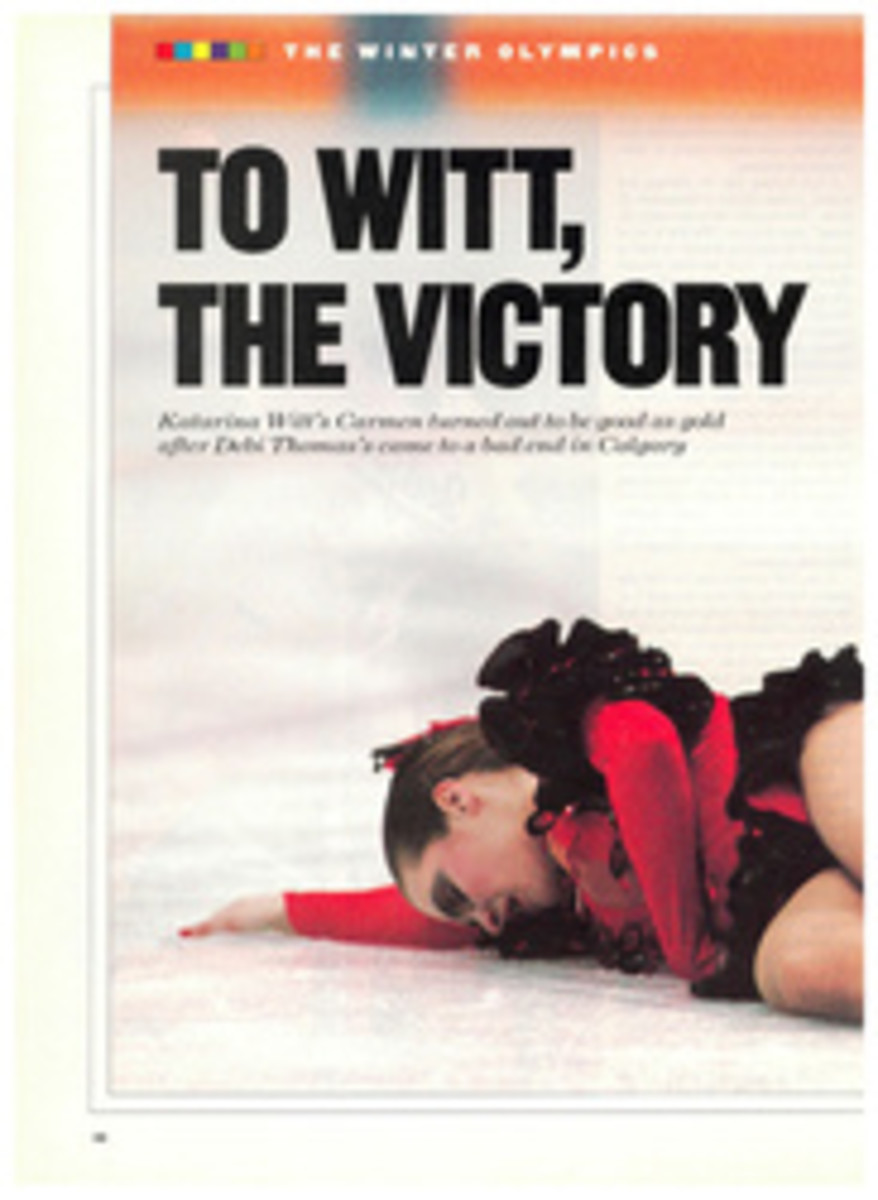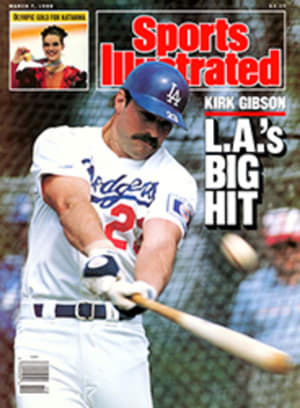
THE VERY LATEST IN MUSHING: POODLE-POWERED SLEDS
Sometimes on a bitter, starry night, when a pockmarked moon rises from behind the Alaskan landscape, a wolf howls near John Suter's house. As its cries echo along the banks of Knik Inlet, Suter's sled dogs cock their snouts toward the mountains and reply. There is nothing odd about this. Buck, the canine hero of Jack London's The Call of the Wild, often conversed with wolves.
What is a trifle unusual given the subarctic setting is that Suter's dogs are black standard poodles, curly-headed fellows whose jet coats seem misplaced in a world of snow.
Poodles. For decades the breed has lugged a load of stereotypically dainty baggage—a burden Suter, 38, is determined to replace with a sled. "People should give poodles a chance to enjoy outdoor activities," he says. "There's a great misunderstanding about what poodles can do, and that's why we're on this crusade."
In January, Suter, his wife, Mary, and their three children loaded the family motor home and flatbed trailer with kibble, sleds and 19 dogs—11 poodles and eight huskies. From Chugiak, 20 miles north of Anchorage, they headed east and south along the Alaska Highway. The Suters' destination was Duluth, the starting point for the 500-mile John Bear-grease Sled Dog Marathon.
Suter's goal was not to win the race, which traces the U.S. Mail delivery route followed in the 1800s by the Chippewa musher John Beargrease. Suter was determined just to finish it—something many of his Alaskan friends were betting he and his poodles couldn't do.
As the starting time approached, the temperature in Duluth dropped to -32°, with a windchill factor of -50. Fresh snow blanketed the ground. Waiting his turn at the starting line, Suter psyched the poodles and their husky harness mates into a competitive frenzy. They were about to go up against 28 dog teams—one made up of white German shepherds and the rest composed of huskies, malamutes and related mixes. There was not another poodle team in the field. Attached to Suter's red sled, where the STP or Pennzoil decals would go on race cars, was the logo for the team's one official sponsor: OUT! Pet Products, manufacturer of animal stain removers and deodorants. The logo showed a cartoon dog and a cartoon cat holding their noses. On his sky-blue parka, Suter wore a matching OUT! emblem. The company, he says, paid $250 for the advertisement.
When at last the race began, Suter and his string of 19 yelping dogs shot off around the oval starting track and headed for the outskirts of Duluth. Almost immediately the poodles spied an empty parking lot and skedaddled across it before finally getting back on the right path. A few minor tangling mishaps later, the team found the entrance to the North Shore Trail. From there, with snow flying backward from churning poodle haunches, the team mushed off to fulfill its destiny.
By his own admission, John Suter was not exactly born to race poodles. A self-described California sunshine boy, Suter spent his youth pursuing fair-weather sports; he excelled in swimming and soccer. In the early '70s, he volunteered for the Army and was sent to Alaska, where he served as a Ranger and was a member of the Army's biathlon team. By 1973, he had become Alaska's Army middleweight boxing champion.
When his tour of duty ended, Suter stayed in Alaska and worked as a truck driver, a stevedore and a support man for the Alaska pipeline. In 1974, after marrying Mary and settling down in her hometown of Chugiak, Suter realized he needed a new sport, one to take the drudgery out of arctic winters. Mushing seemed like a good possibility. He had always loved dogs: As a child he had belonged to a police K-9 club, working with German shepherds. But a year of library research and interviews with mushers convinced him it would take a lot of money to get started. Maybe, he thought, by introducing a new breed to the sport, he could win some support.
One weekend Suter's father-in-law asked him to look after his miniature poodle, Fluette. For fun, Suter took Fluette for a ride on a snowmobile. "Fluette would jump off and run alongside me," Suter says. "I was extremely impressed with how fast this little dog could go." Perhaps standard poodles, which beneath their curls have body types similar to those of huskies, could hold their own as sled dogs.
Eleven years, four poodle generations, 182 races, 14,000 mushing miles and more than $120,000 of his own money later, Suter has become one of the world's foremost poodle proponents. "The poodle is the most well-rounded dog in the world," he says. "It can track well, it can guard well, it can show well, it can obey well, it can retrieve well, and now it can pull a sled well."
This is not a crackpot talking; history backs his claims. Early military poodles, for instance, with hair trimmed to resemble lions' manes, appear on ancient Greek and Roman coins. Even the name poodle, a corruption of the German pudel, meaning "to splash in water," testifies to the breed's prowess at retrieving. On the other hand, Suter is the first to admit that poodles, or any non-Arctic dogs, for that matter, are not as well suited to the sport as huskies are. "There is no question that huskies are born to run," he says. "It's like they have a computer chip in the brain that says 'go.' Poodles have to learn to go."
But that doesn't mean Suter considers the challenge impossible. After years of experimenting with breeding and training techniques, he believes he has found a way to instill in poodles the same inner drive found in his huskies. The idea is simple: raise and train dogs of both breeds together, starting when they are two to four months old. "That way they develop a strong family unit," he says. "Like a wolf pack."
In the process, the poodle puppies learn by assimilation what their husky stepbrothers and-sisters know by instinct. Since adopting this approach, Suter says, he has seen a 100% improvement over his original Southern California poodle breeding stock, and he expects even better dogs in the next—his fifth—generation.
Alas, such improvement will be necessary. After 214 miles of solid, if not spectacular, mushing in the John Bear-grease race, Suter's team yipped into the Grand Portage checkpoint for a rest stop. A race veterinarian pronounced the dogs in great shape and said that their feet, protected by booties, were the healthiest in the race. An official reminded Suter of the rules: Teams trailing the leader, Terry Adkins, by more than 20 hours would not be allowed to finish the race. Suter's team was 15 hours behind and needed 4½ hours to rest before it could continue. When he was ready to go on, Suter was told that to spare volunteers who had already been waiting at checkpoints in the woods for 36 hours, he would have to withdraw. Suter protested, but to no avail. Jamie Nelson went on to lead her team of huskies to victory.
Suter took the defeat in stride. "This was race number 181," he said. "On January 27, we'll go on to number 182, Clam Gulch, a 208-miler up in Alaska. [The team finished 10th among 21 entries.] In March we're signed up for the Iditarod—1,157 miles from Anchorage to Nome. We will complete the whole thing because there's no time limit."
For the past three years, the Iditarod has been won by a woman. There's a saying making the rounds in Alaskan dog-racing circles: Women win the Iditarod and men mush poodles. There's another saying too, one that Suter favors: Every underdog has its day.
PHOTO
JAMES S. THORNTON
Not much chance of the Suters losing sight of these two dogs in the snow.
PHOTO
JAMES S. THORNTON
At the Duluth race, poodles mingled with huskies on Superior's shores.
James Thornton, a onetime poodle-bite victim, has come to admire the breed.

